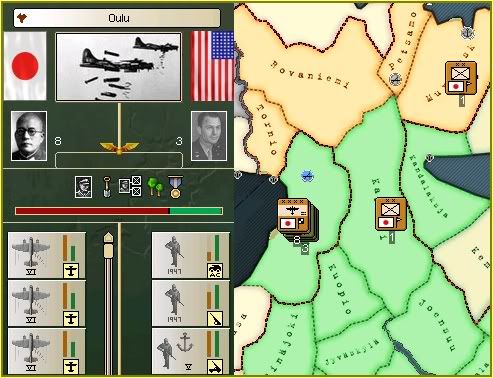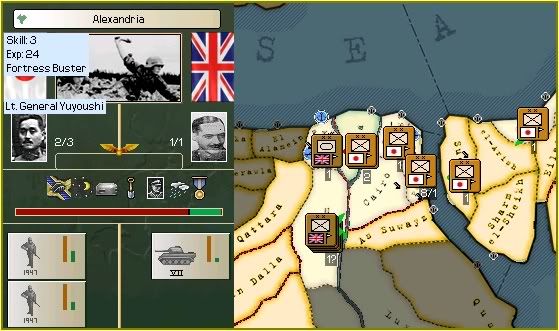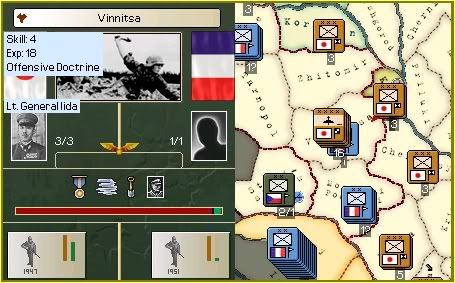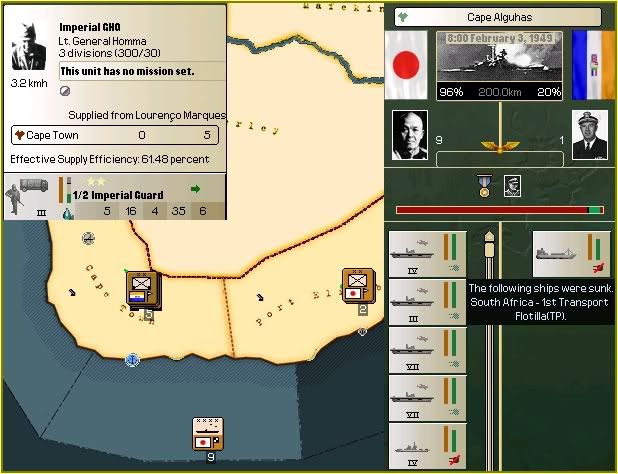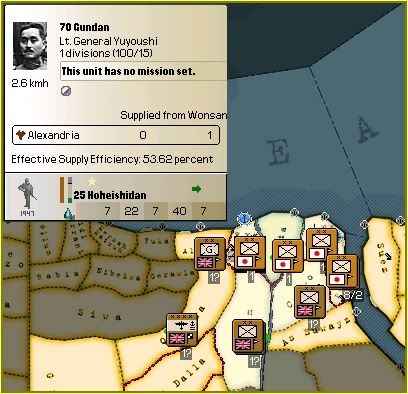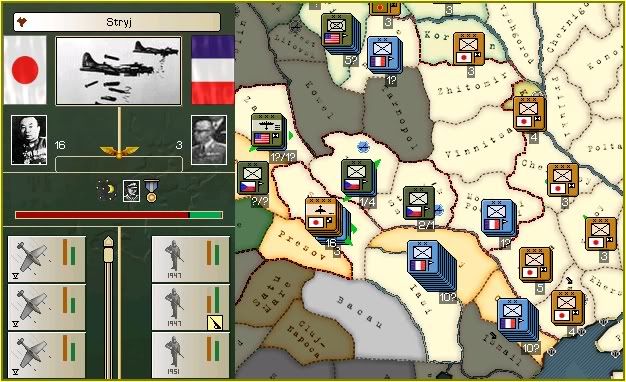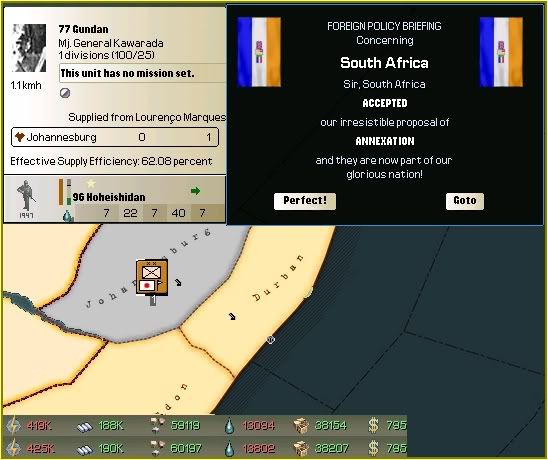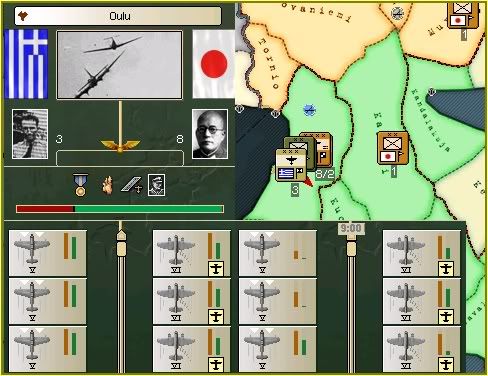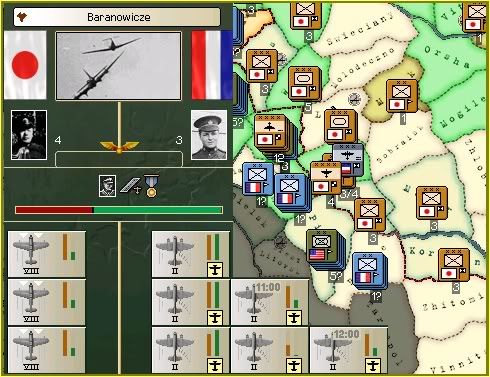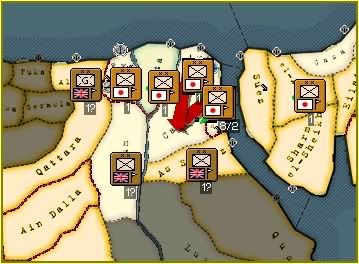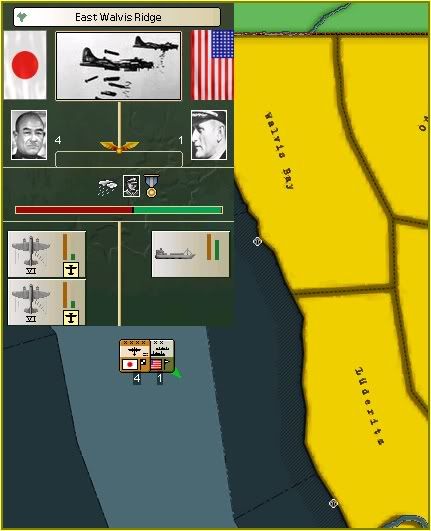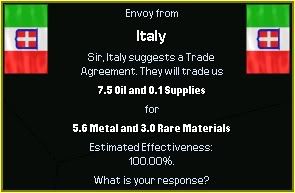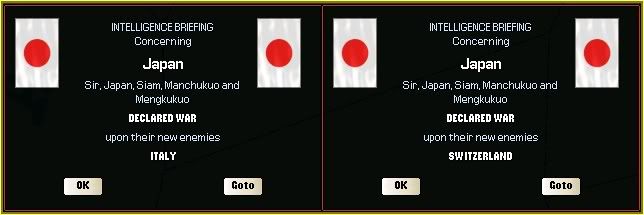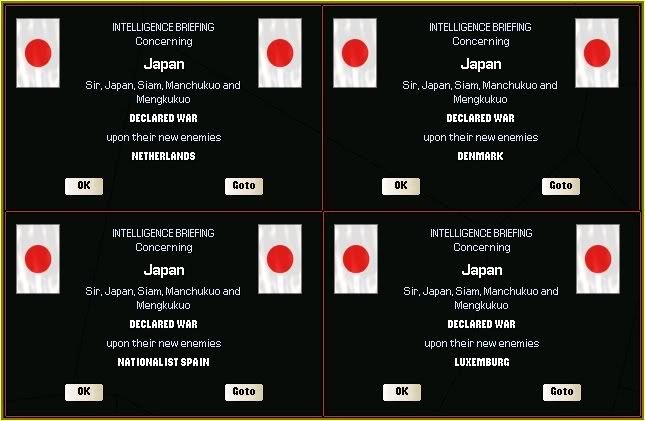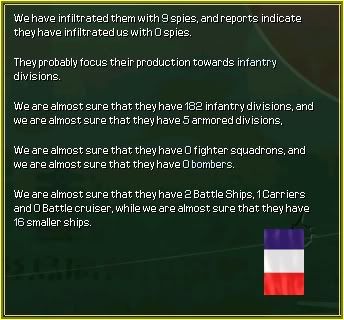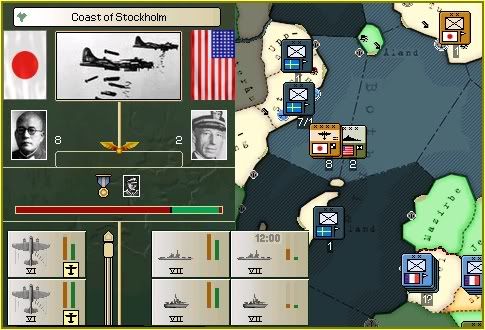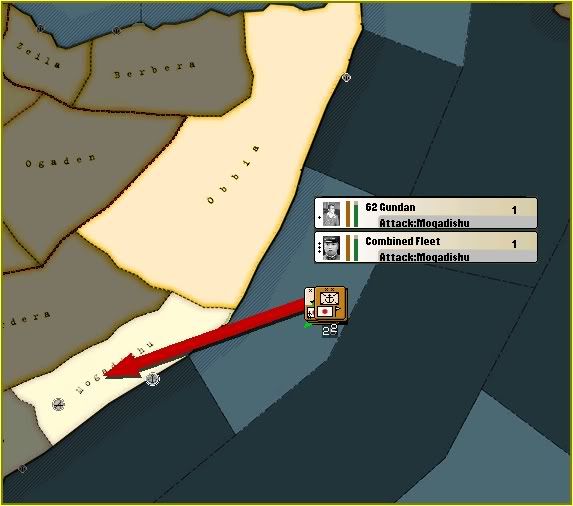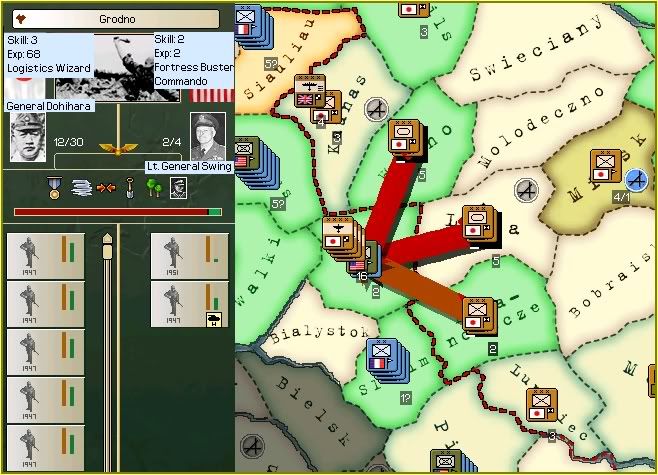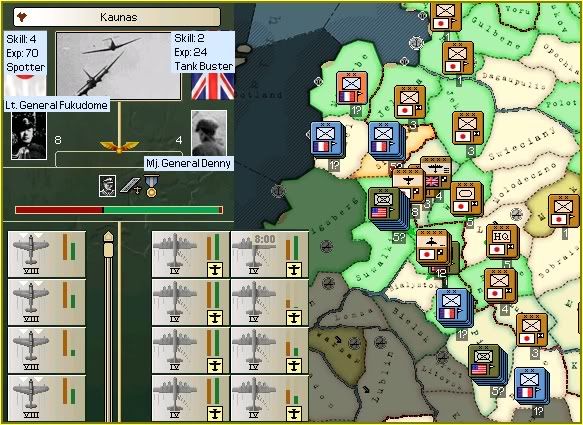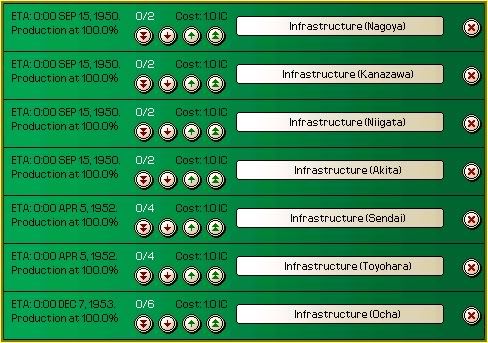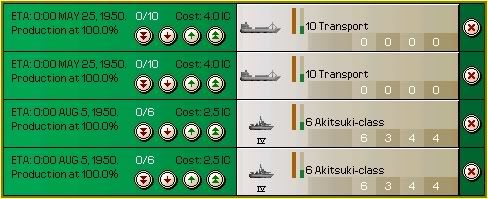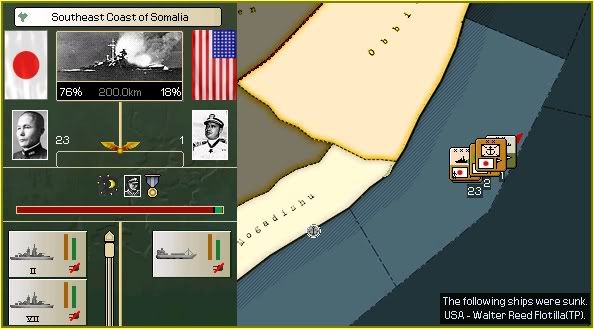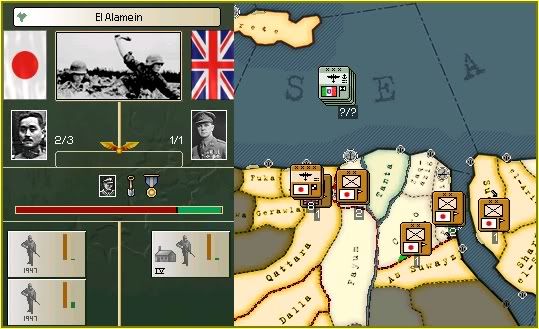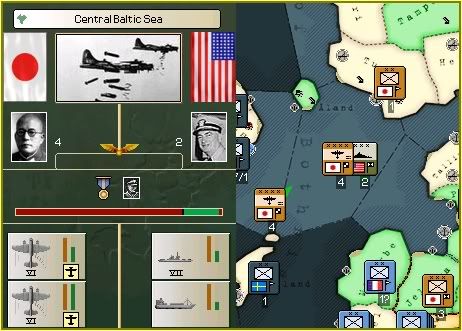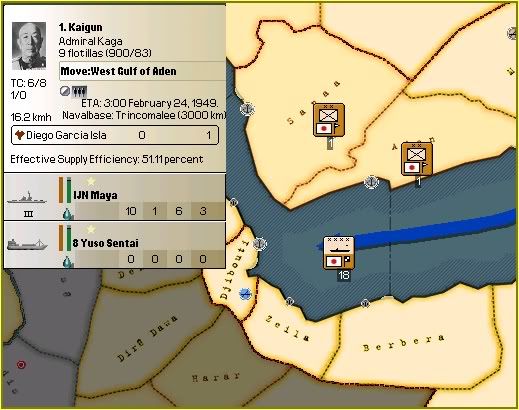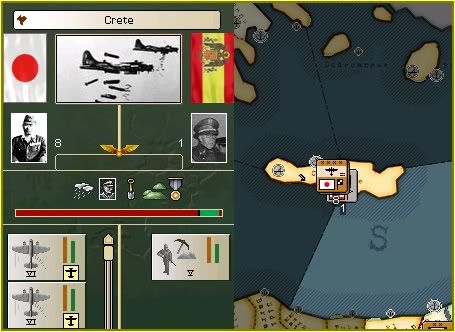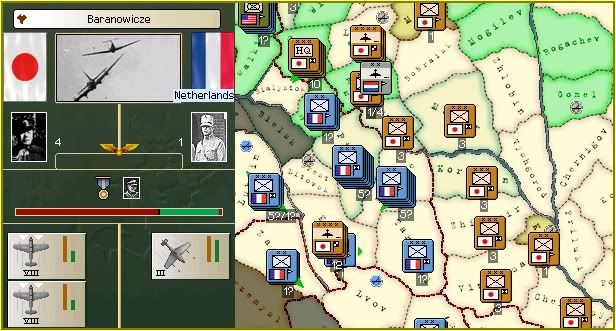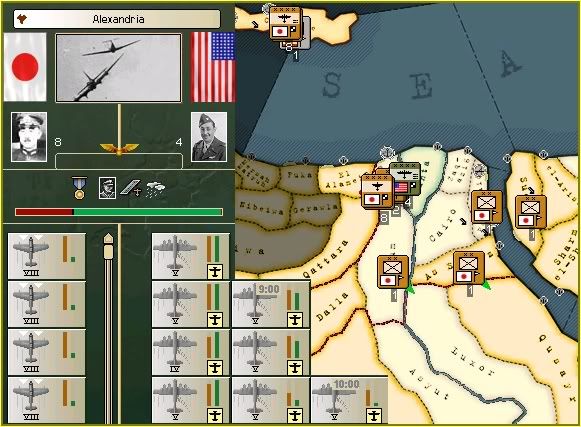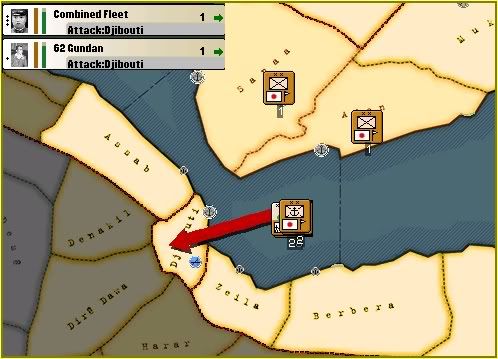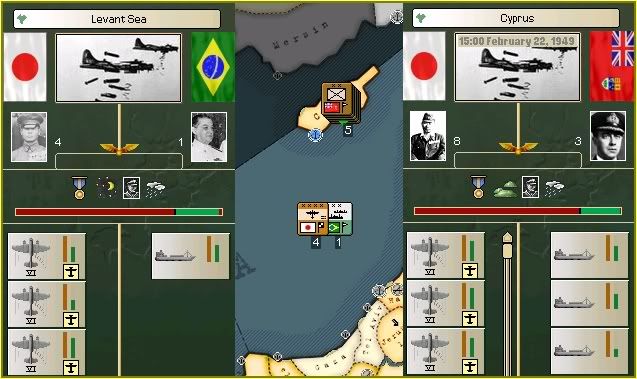Operation Influx
19
0800 February 1st 1949.
North China Army Headquarters. Stalingrad, Soviet Union.
The Allies had been trying for years to gain a foothold behind the Japanese lines and had been repeatedly thrown back into the sea during every such attempt. Allied Commanders suffered from three major weaknesses when planning amphibious invasions. A lack of available forces to adequately back up the initial assault and a lack of Transport capacity to move troops ever since the Japanese threw the British out of Borneo causing massive losses to the Allied Merchant Marine. The third and possibly most important problem the Allies were facing was a lack of Air support at the invasion site.
The recent gains made by American forces in Finland were suffering from the same symptoms as previous invasions. Obata's Tactical bomber group was systematically reducing the beach heads and preventing any major gains being made as the Allies failed to adequately reinforce the landings and had little to no air support.
0000 February 2nd 1949.
Africa Army Headquarters. Abadan, Persia.
Progress in southern Africa was being made at a high speed but Higashikuni knew that any further advances were likely to be considerably slower as terrain and fatigue began to drain his forces.
North Africa had been an area of quiet in the storm of battle around the World but Higashikuni had managed to gain a critical edge as Lt. General Yuyoushi joined Mj. General Kawashima in Tanta. The extra firepower brought with the second Infantry division was enough to overpower the defences of Alexandria which would allow Itabana's bombers much easier access to more vunerable Allied troops.
1100 February 2nd 1949.
Central Asia Army Headquarters. Sevastopol, Soviet Union.
Japanese ground attacks were rare in Europe as Hata was required to make certain that the enemy was guaranteed to lose any battle. The current weather and supply situation largely dictated the pace of any counter offensive made by the Commander of the Central Asia Army.
Removing the remaining dug in enemy division in Vinnitsa required little effort by Lt. General Iida's Infantry corps as Shimoyama's Dive bombers had already disorganised the defenders. Iida would not be advancing after the easy victory as Hata allowed the bombers to destroy the retreating enemy.
0300 February 3rd 1949.
Africa Army Headquarters. Abadan, Persia.
The surprise of Operation Perfidious had still not been overcome by the Allies as Higashikuni's forces in South Africa kept up their blistering pace and achieved their objectives in a timely manner.
The capture of Cape Town by Lt. General Homma forced the Transport fleet in it's port to head out to see where Carrier Group D was waiting. Aircraft from IJN Zuikaku quickly accounted for the enemy vessels.
Yuyoushi required a little over three days to advance and capture Alexandria as he arrived at 1500 hours on the 5th of February. Allied forces had taken Cairo in the mean time but Itabana had already destroyed the retreating Armoured division and was beginning to thin out the remaining Allied divisions in the area. Higashikuni's Africa Army was entering a new phase of operations as it began to expand in both the north and south.
1700 February 5th 1949.
The Skies Above Stryj.
The area around Kiev had been cleared of enemy troops once more which left Shimoyama a wide range of possible target areas. The Romanian border was not a good choice as the defenders had been given ample time to dig in and any air attacks would only inflict minor damage. Hata ordered Shimoyama deep behind enemy lines.
Stryj was the chosen target as the bombers headed into the airspace around Lvov. Both Tanaka and Fukui were escorting the more fragile bombers to offer as much protection as possible. The reports that Hata got back from Shimoyama indicated that the enemy was indeed very weak in the area opposite Kiev and a possible counter attack could be launched to at least try and regain some of the lost territory.
0600 February 6th 1949.
Diplomatic Offices. Tokyo, Japan.
Mamoru had already made the necessary alteration to one of his lists before the summoned Ambassador arrived in his offices. For the first time in a while a list shrunk rather than expanding.
The South African Ambassador had brought the keys to his own Embassy along as he knew why Mamoru had summoned him. Japanese forces led by Mj. General Kawarada had arrived as predicted in Johannesburg. Back in 1944 the amount of Energy recovered from the annexation would have brought great cheer to Minister Mamoru, but a few thousand tonnes of the commodity were no longer worthy of celebration given the enormous Japanese stockpile. Little else was liberated.
0700 February 6th 1949.
The Skies Over the Western Front.
Encounters between Japanese bombers and enemy Interceptors were not uncommon but were usually avoided. Only one bomber group was operating without it's own interceptor group and this was the one that was attacked.
Obata was not defenseless of course as he had dedicated Escort Fighters within his formation. Those veteran Escorts managed to inflict severe casualties to the Greek Interceptors that had attacked the bomber group. Almost half of the attacking aircraft had been shot down inside two hours and the remainder returned to their base in Oulu an hour later which left Obata to continue his ground attack mission.
Two hours after Obata had been attacked, Fukudome began a dogfight of his own as he intercepted a Yugoslav Tactical bomber formation over Baranowicze at 0900 hours. By 1100 hours one outdated enemy squadron had been totally destroyed with a second following at 1200 hours. The third would not escape either as Fukudome's experienced pilots tore it to pieces.
1100 February 6th 1949.
Africa Army Headquarters. Abadan, Persia.
Higashikuni had moved some of his beach defending forces west towards Port Said as the threat of an enemy invasion had greatly reduced. This now gave him the numerical edge in the north as Itabana had destroyed most enemy opposition.
Cairo would soon be back in Japanese hands as two divisions began their advance on February 6th.
The rebasing of two Japanese Tactical bomber wings to Cape Town had greatly increased the hunting grounds available to the bombers. Tsukahara led his wing along the west African coast where he encountered an American Transport fleet heading south. Several smaller fleets would be spotted heading this way which gave the Imperial Japanese Navy ample time to intercept if required.
0000 February 8th 1949.
Diplomatic Offices. Tokyo, Japan.
The Emperor had chosen to speak with several of his Cabinet Ministers following the monthly meeting and had expressed upon them certain plans that He had been concocting. No fancy new offensive had been discussed but there were clearly some things on the Emperors' mind that had been clarified during the meeting.
An offer made by the Italian Ambassador would lead Mamoru back to His Emperors' chambers to determine if the timing was right. The Swiss Ambassador had accompanied his Italian counterpart to broker the trade deal as his Country was notoriously neutral to events occuring in the World at large. They did not have to wait long for Mamoru to return to his office and respond to the possible trade agreement.
"Gentlemen, thank you for your patience." Mamoru said after returning from the Imperial Palace.
"You are most welcome Minister Mamoru. I trust the Emperor thought about our little deal before agreeing to it? It is after all beneficial to both Nations involved." replied the Swiss Ambassador confidently.
"He did indeed think on it Ambassador. The Emperor has decided to offer a different proposal."
"Oh?" asked the Italian Ambassador thinking of a larger Trade being made.
"I have been asked to inform you that Japan has no need of such a Trade agreement at this time, and the Emperor thinks that His interests would be better suited by invading both of your Countries and taking by force what you Gentlemen are offering."
"Is this some kind of joke?" asked the Italian Ambassador.
"I can assure you that the Emperor is not even remotely joking Ambassador. Please inform your respective Governments that a State of War now exists between them and the Japanese Empire."
The two astonished Ambassadors left Mamorus' office shaking their heads in disbelief, leaving the Japanese Foreign Minister time to talk to his assistant, who quickly noted down his Ministers requirements.
A procession of Ambassadors were seen arriving and leaving the Japanese Diplomatic offices shortly afterwards.
The list of Japan's enemies grew as the Ambassadors from the Netherlands, Denmark, Nationalist Spain and Luxemburg were informed that they too were now at War with Japan. Minister Jun had impressed upon the Emperor during the meeting at the beginning of the month that his aircraft were beginning to find it more difficult to find decent targets in the West and some fresh enemies could easily be accomodated at this time. The Emperor did not wish to have his main bomber wings idle and had agreed to give them some extra work at a convenient time.
Minister Kuniaki's agents estimated that an additional one hundred or more enemy divisions would now be making their way towards the Soviet border to suppliment the already large Allied presence.
The latest intelligence report on France backed up such numbers as the French Army swelled to a size that gave it more Infantry divisions than the Imperial Japanese Army possessed. The Emperor was undaunted by such numbers as He was supremely confident in His own Armed Forces ability to defeat any such force after the destruction of the Red Army.
0800 February 8th 1949.
Then Skies Above the Coast of Stockholm.
Obata had not needed much time to annihilate the remaining American troops in Finland which left him the freedom to move onto his next task.
The destruction of enemy surface ships in the Baltic Sea to prevent further invasions. A small anti-Submarine fleet would be his first find as he searched along the Swedish coast. The Light Cruiser, USS Santa Fe, would not survive the bombing runs made by Obata's bombers.
1500 February 8th 1949.
BB Division 1 Flagship. IJN Fuso, Southeast Coast of Somalia.
Operation Perfidious had a number of objectives and the capture of South Africa was but one. Ozawa was also required to support follow-up landings throughout eastern Africa.
Imamura and Banzai had not stayed long in South Africa and began their latest venture as they headed towards the vacant port of Mogadishu. The beaches along the eastern coast of Africa had all been protected by South African troops under British control and it appeared as though the fall of South Africa had led to them abandoning their posts.
0900 February 9th 1949.
Central Asia Army Headquarters. Sevastopol, Soviet Union.
The Central Asia Army had been building up forces around Grodno for some time and the enemy had been almost constantly bombed during that process. Several weeks had been required to prepare the Japanese troops for combat as they recovered from long trips and the infrastructure was rebuilt.
General Dohihara led twelve Japanese divisions forwards on February 9th as Hata finally decided that it was time to turn up the pressure on the Allied front line. Softening up attacks had already been made by Nakajima's Dive bomber group which allowed for a quick victory that would see ten Japanese divisions advance towards Grodno from Wilno and Lida, including all six of Japan's Armoured divisions.
1700 February 9th 1949.
Africa Army Headquarters. Abadan, Persia.
The first consequence of the added Declarations of War occured in the eastern Mediterranean Sea. The annexation of South Africa had gained the island of Crete which had been controlled by the former Country. The presence of a large Energy reserve had sent several Japanese convoys to the island to recover the stockpile.
Intelligence reports had not given the Italian Airforce many squadrons but there were clearly quite a few Naval bombers amongst them. Convoy losses began to mount quickly as these aircraft hammered the unprotected merchant ships. Minister Jun would respond by sending Tanaka and Fukui to the North African coast to neutralise this new threat. They would require some time to recover from their journey before they could halt these attacks.


